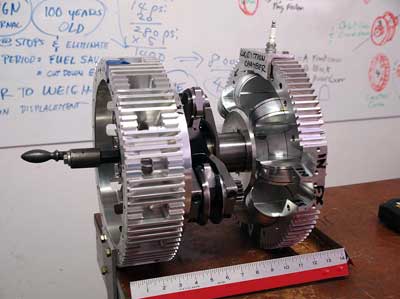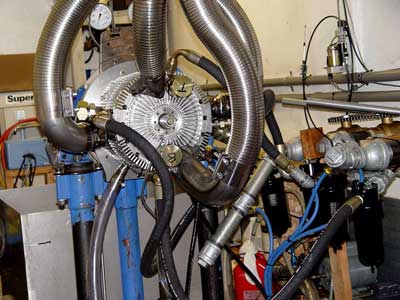As gas prices soar steadily higher, and environmentalists become steadily louder, the Western world is becoming more and more expectant of what I call “pain-killer technologies.” These strategies are any method that involves changing the car in its present form, including hybrids, bio-fuels, and electric power. The first works in the right conditions, but the gain it provides is often cancelled out by driver aggression (not to mention the damage done during the battery-manufacturing process). The second, bio-fuels, almost never claims in its marketing to be any different. The reason for this is that bio-fuels are not actually that efficient. E85 (which is 85% corn-based ethanol and 15% gasoline), the most popular form of bio-fuel, actually lowers fuel efficiency by up to 25%. I have my own opinions on the third option, complete electric, but the short story is this; an electric vehicle cannot be successful as a car. For the technology to grow to a useable form, it needs a designated platform for normal people to identify as “electric.”
When it comes to cars, I’m not exactly “environmentally conscious.” I believe that the changes car companies are making simply aren’t enough to warrant the attention people are giving them; they are often inefficient, overcomplicated, and impractical. Plus, as a driver and car enthusiast, I see driving as something that should include sound and involvement with the vehicle, and no one makes a hybrid Ariel Atom (not that I drive a Atom or anything in that class, of course). What the personal transportation world so desperately needs is a new design, one that starts from scratch and is designed to suit the needs of everyone from the everyday driver to an enthusiast such as myself.
And there is one. But unlike so many similar concepts, the technology I’m talking about is not a lone scientist’s SolidWorks render that never made it into reality. Instead, this technology has existed for years, and been built in a variety of forms – and it works in practice. The name responsible for the existence of this engine is Angel Labs, and the man behind the creation itself is Raphial Morgado. What he invented is called the “MYTTM Engine,” and it’s one of the most promising efficiency-related developments in the last ten years.

While previous innovations in engines and propulsion systems were about simplicity and creating fewer moving parts (such as the rotary engine and electric motors), the MYTTM Engine takes the other path, using clever solutions to create a powerful and efficient design. The device (and pay attention here, because you could be seeing this idea a lot more in the future) relies on circular motion similar, at least in terms of spacing, to that of a rotary engine, in which intake, compression, ignition, and exhaust all take place at different stages of the rotation. The comparison ends there, however, because unlike the rotary engine, there are several “pistons” that ensure that any ignition is always mirrored on the opposite side of the ring simultaneously (see this video for a much better view). And not only that, but for every revolution of the crankshaft (located to the side of the ring), 32 ignitions occur. By their calculations, Angel Labs puts their engine at an equivalent displacement (to a traditional reciprocating engine, that is) at 848 cubic inches. An engine effectively twice the size of a Corvette Z06’s, then, but physically smaller than a Mazda rotary.
And now, with the basic idea of the way, it’s time for some superlatives. According to Angel Labs’ “Mighty Engine” theory, the engine weighs just 150 pounds, but is rated, in naturally aspirated form, at 850 hp. Think of that another way - it’s more than one horsepower per cubic inch. Plus, with so much power available, the engine is asked to do so much less - meaning it’s very efficient.
But that’s just the base engine. Need more power? Is there just too much space left in your engine bay? Install a supercharger or turbocharger, and you can bring power up to 3,000 horsepower. Yes, 3,000. Still not good enough? You could attach another “cylinder ring” to the MYT and double the displacement. We’re starting to get into top-fuel dragster territory here.

Speaking of fuels, the engine has the ability to be converted to run on diesel, biodiesel, petroleum, and even compressed air. Not that compressed air is a “free” source, mind you - much like electricity, it requires energy (often petroleum-sourced) to compress the air. But it can still run on it, as this video from PESN shows. Mind you, this is a video from six years ago, and the engine was probably not fine-tuned.
Usually, by this point, we would have reached the point where we discuss the shortcomings of development, but the MYT engine has surprising business potential. The engine has existed in a physical form for more than seven years. In 2004, for example, they put it in that Ford Focus in their video earlier running on compressed air. But a decade-old Focus probably isn’t Angel Labs’ target audience. The problem is that car companies are less than willing to invest in a new engine. Electric motors took ages (and still don’t work), and any company that invested in one is unlikely to be willing to try anything new. This, unfortunately, leaves use of the engine to the often delusional small companies whose sole purpose is to be environmentally friendly.
Depending upon marketing, refinement, and the choices made by Angel Labs, we may or may not be seeing this engine in other vehicles. I’m still a fan of the traditional reciprocating engine and its sound, feel, and popularity, but for those who want massive power, increased efficiency, and experimentation with future technologies, the MYT engine may be an option.
Other Sources: (See above text
for more)
http://angellabsllc.com/
http://pesn.com/2011/04/18/9501812_MYT_Engine_on_2001_Ford_Focus_on_air/
http://angellabsllc.com/specs.html
http://www.ncbiofuels.net/biofuels-faq.html
http://angellabsllc.com/animation.html
Images:
http://angellabsllc.com/AirMotoringResearch.html
http://angellabsllc.com/mytengine.html
Originally published: http://hittingredline.com/content/power-responsibility-potential-myt-engine